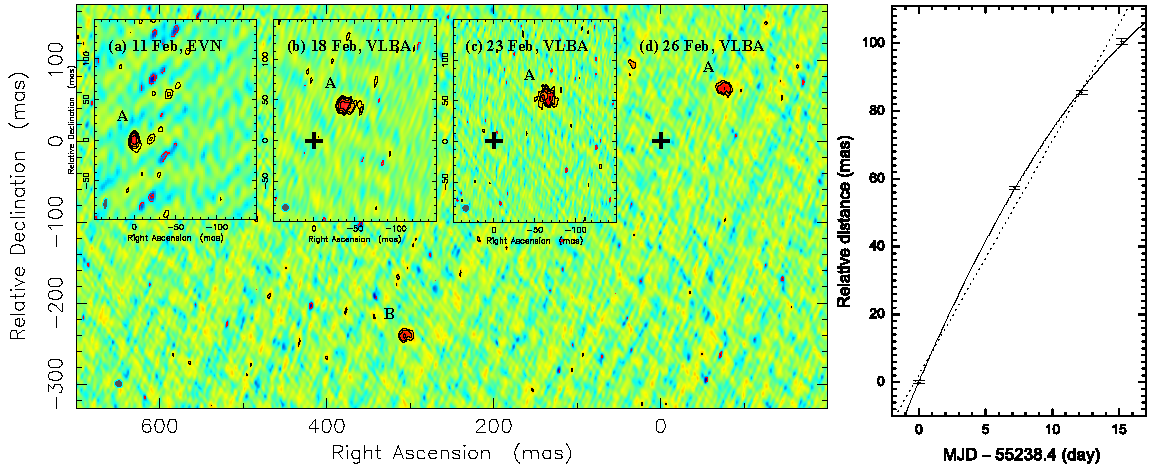Daily Image
14-09-2010Decelerating jet in a newly discovered Galactic black hole transient
| Submitter: | Jun Yang |
| Description: | Last year RXTE, an X-ray observatory in space discovered a new object XTE J1752-223. This source has been shown to be a new stellar-mass black hole in our Galaxy. These objects sometimes produce bright flares during which they eject relativistic plasma in well collimated beams (jets). XTE J1752-223 has entered a flaring period in early 2010 at wavelengths from X-ray to the radio band. We initiated high resolution radio observations with the European VLBI Network (EVN) to look for evidence of jetted ejecta in this sytem. The initial observations were carried out in electronic VLBI mode (real-time internet data transfer and correlation technique made operational by the EXPRES project in the EVN), which allowed us to confirm a detection on milliarcsecond scales and quickly organize three epochs of follow-up observations with the Very Long Baseline Array (VLBA) in February 2010. We successfully tracked mildly relativistic moving ejecta, marked as "A" in the above pseudo colour images, and receding ejecta marked as "B" that brightened at the last epoch, and can be seen in the large background image. The cross shows the position of the first detection of "A". The motion of ejecta "A", plotted in right panel, significantly deviates from the uniform proper motion model (dotted line) and requires jet deceleration at a rate of ~0.34 milliarcsecond per square day (solid curve). Such rapid deceleration is rarely observed in Galactic transient sources, and it provides strong evidence for interaction of the ejecta with the surrounding interstellar medium or residual material from earlier ejections. Further details of this work can be found in Yang et al. 2010, MNRAS Letters, accepted, arXiv:1009.1367. |
| Copyright: | Jun Yang, JIVE |
| Tweet |  |
